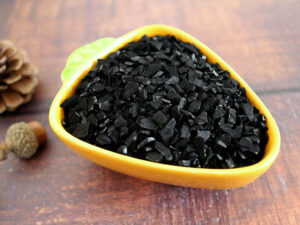Description
Activated Carbon: Your Unsung Hero Against Airborne Toxins
In today’s world, we’re increasingly aware of the pollutants lurking in our air. From volatile organic compounds (VOCs) released by everyday products to industrial emissions and allergens, the air we breathe can be a cocktail of harmful substances. While air purifiers are becoming increasingly popular, understanding the technology behind them is crucial. One of the most effective and widely used components in air purification systems is activated carbon. This article explores the remarkable properties of activated carbon and its invaluable role in combating airborne toxins.
What is Activated Carbon?
Activated carbon, also known as activated charcoal, is a highly porous form of carbon processed to have a large surface area available for adsorption. Think of it like a sponge, but instead of absorbing liquids, it attracts and traps gas and liquid molecules. This immense surface area, typically ranging from 500 to 3000 square meters per gram, is the key to its effectiveness.
Activated carbon is derived from various organic materials, including:
- Coal: A common and readily available source.
- Wood: Offers a sustainable and renewable option.
- Coconut Shells: A byproduct of the coconut industry, providing an eco-friendly alternative.
- Peat: Another natural source, offering a unique carbon structure.
The “activation” process involves treating the raw material with high temperatures and often chemical agents. This creates a porous structure, significantly increasing the surface area and enhancing its adsorption capabilities.
How Does Activated Carbon Work Against Airborne Toxins?
The process by which activated carbon captures airborne toxins is called adsorption, not absorption. Adsorption is a surface phenomenon, where molecules of the pollutant adhere to the surface of the activated carbon material. The large surface area provides countless sites for these molecules to bind, effectively trapping them within the carbon structure.
Activated carbon is particularly effective at removing a wide range of airborne toxins, including:
- Volatile Organic Compounds (VOCs): These are emitted from paints, cleaning products, furniture, and even cooking. Examples include formaldehyde, benzene, and toluene.
- Gases and Odors: Activated carbon can neutralize unpleasant smells from pets, cooking, smoke, and other sources. It also removes gases like sulfur dioxide and hydrogen sulfide.
- Smoke and Fumes: Activated carbon filters are frequently used in smoking lounges and industrial settings to capture smoke particles and fumes.
- Allergens: While activated carbon doesn’t remove particulate allergens like pollen directly, it can help remove the odors and VOCs associated with them, indirectly improving air quality for allergy sufferers.
Activated Carbon in Air Purification Systems
Activated carbon filters are a staple in many air purifiers. They often work in conjunction with other filtration technologies, such as HEPA (High-Efficiency Particulate Air) filters, which are designed to capture particulate matter like dust, pollen, and pet dander. The HEPA filter removes the larger particles, while the activated carbon filter tackles the gases, odors, and VOCs that HEPA filters miss.
When choosing an air purifier with activated carbon, consider the following:
- Carbon Weight: The heavier the carbon filter, the more capacity it has to adsorb toxins.
- Carbon Source: Consider the environmental impact of different sources. Coconut shell activated carbon is often considered a more sustainable option.
- Filter Replacement: Activated carbon filters eventually become saturated and need to be replaced. Check the manufacturer’s recommendations for replacement frequency.
Beyond Air Purification: Other Applications
While its use in air purification is prominent, activated carbon has a wide range of applications, including:
- Water Filtration: Removing contaminants and improving taste and odor.
- Medical Treatments: Used to treat poisoning and drug overdose by adsorbing toxins in the digestive system.
- Industrial Processes: Used in various industries for purification and separation processes.
- Wastewater Treatment: Removing pollutants from wastewater.
Conclusion
Activated carbon is a powerful and versatile material that plays a critical role in improving air quality by capturing airborne toxins. Its porous structure and immense surface area make it an ideal adsorbent for a wide range of pollutants, from VOCs to odors and gases. By understanding the science behind activated carbon, we can make informed decisions about air purification and create healthier indoor environments. As we continue to face increasing environmental challenges, activated carbon will undoubtedly remain a key component in our efforts to breathe cleaner and healthier air.









Reviews
There are no reviews yet.